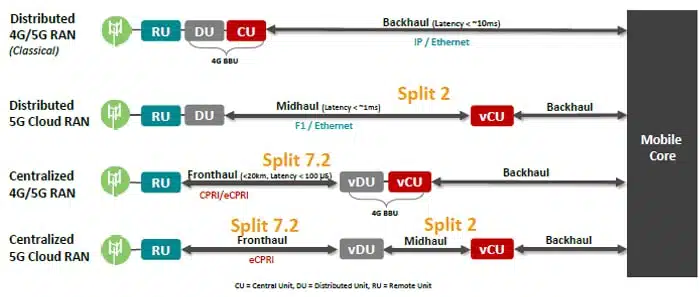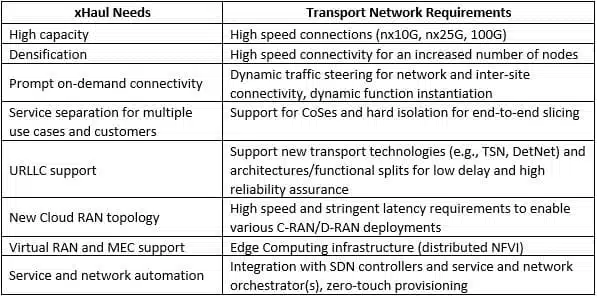
Everything You need to Know About 5G xHaul

Even the COVID pandemic can’t seem to stop the rush to 5G. Between November 2019 and October 2020 worldwide commercial deployments went from 1,200 to over 65,000! The completion of 3GPP’s 5G New Radio (NR) Release-16 last summer marked a milestone as it addresses capabilities beyond Enhanced Mobile Broadband (eMBB) including support for unlicensed spectrum, industrial IoT and automotive applications, and integrated access and backhaul (IAB).
Some newly introduced 5G concepts include the disaggregation of the gNB and the transition from backhaul into xHaul (including fronthaul, midhaul and backhaul), both have significant technological and business implications for mobile operators, network wholesalers and transport providers.
Disaggregating the 5G base station’s functionality, for example, has several economic and operational benefits:
• Flexibility and modularity to better fit various use cases with different requirements (topology, latency, capacity, density, space availability, etc.)
• Simplified engineering of the radio site and reduction of its space and power requirements
• Better coordination for efficient use of radio resources and performance features
• Facilitating use of NFV and SDN technologies and migration to vRAN/cRAN

It’s interesting to note that the 3GPP standards tend to consider transport as a trivial function that effortlessly delivers data over the named interfaces with no latency, availability failures, synchronization glitches, or other degradation. Alas, even well-engineered transport networks have limitations and occasionally fail to live up to design requirements.
New RAN Requirements and the Essential CSG Checklist
Driven by new use cases (with highly distributed content and applications) and an innovative RAN architecture that mandates new transport attributes, 5G xHaul is fundamentally different from conventional 4G mobile backhaul. The new requirements include higher data-rates, lower latency and packet loss; higher reliability; hard isolation of network slices; and dynamic connectivity for on-demand services encompassing multiple physical and virtual components. Other factors impacting the transport network include virtualization and edge computing, and network slicing. The following table summarizes some of the key requirements. These are likely to evolve as new standard releases become available:

The interested reader can find out more in the newly published book 5G Radio Access Network Architecture: The Dark Side of 5G, especially the chapter on the new transport network, which was authored by RAD.
A key enabler for CSPs to meet such requirements is the cell site gateway (CSG), but 5G deployments require re-defining the functionality of the CSG. The 5G-ready CSG performs aggregation of multiple traffic types originating in the cell, including 4G, 5G sub 6 GHz (FR1), 5G mmWaves (FR2), small cell transit traffic, WiFi hot spot backhauling, etc. The CSG is responsible for homogenizing traffic across generations and technologies, minimizing transport expenses (including energy efficiency and multiplexing/duplexing in order to minimize fiber count), constructing a single frequency and time-of-day reference clock, providing a cell-wide heart-beat to ensure connectivity to the cell and all its components, and initiating fail-over self-healing procedures as needed. It may additionally incorporate a micro-data center platform for edge computation.
Make sure you follow a comprehensive CSG buyer’s checklist to ensure efficient 5G deployments and support for highly distributed content and applications with multiple classes of service for various end-to-end 5G slices. RAD has a unique view for an effective migration path to 5G to satisfy the engineering and financial challenges faced by mobile operators.
Nothing can to stop the rush to 5G – are you up to speed?






